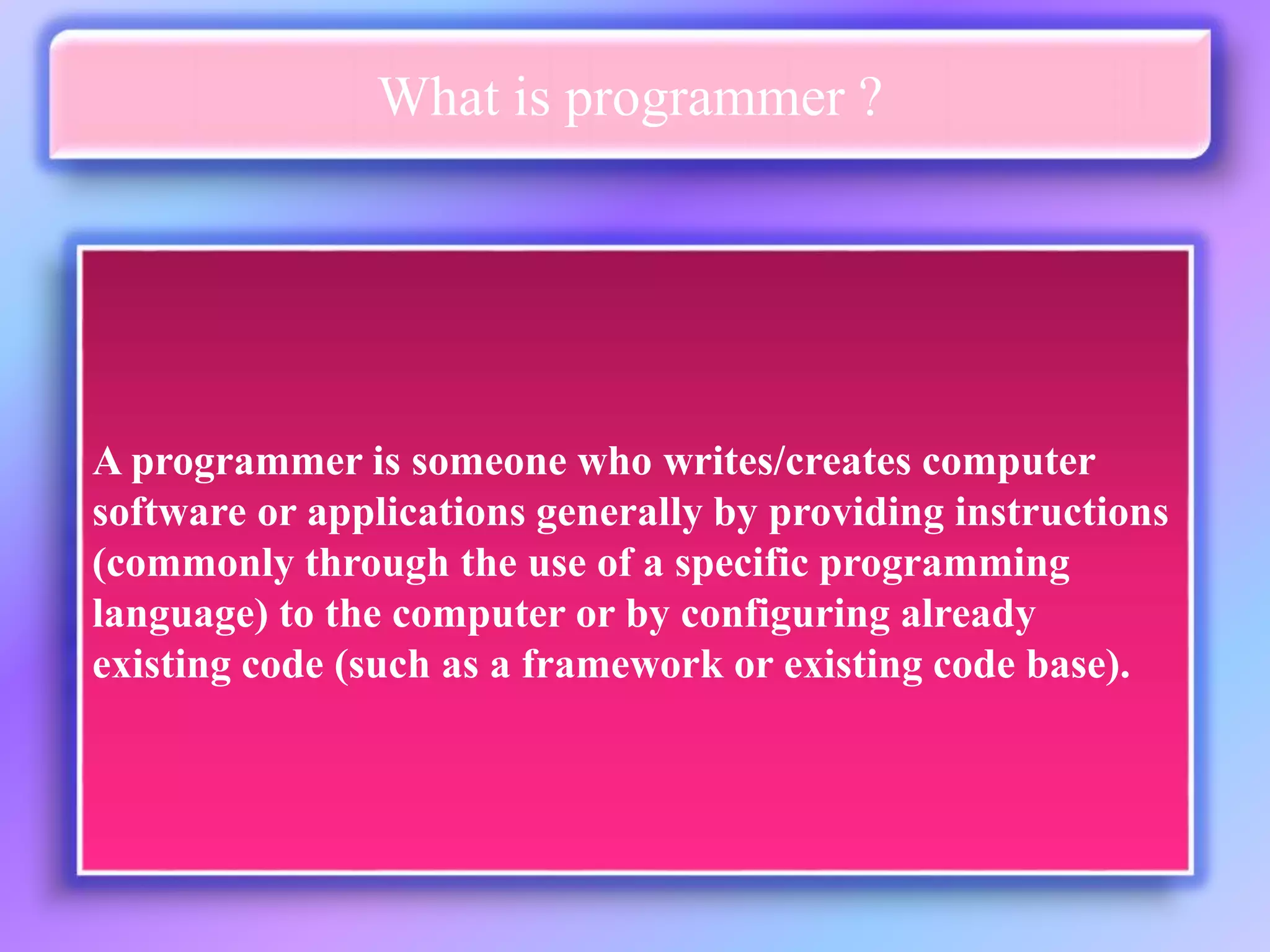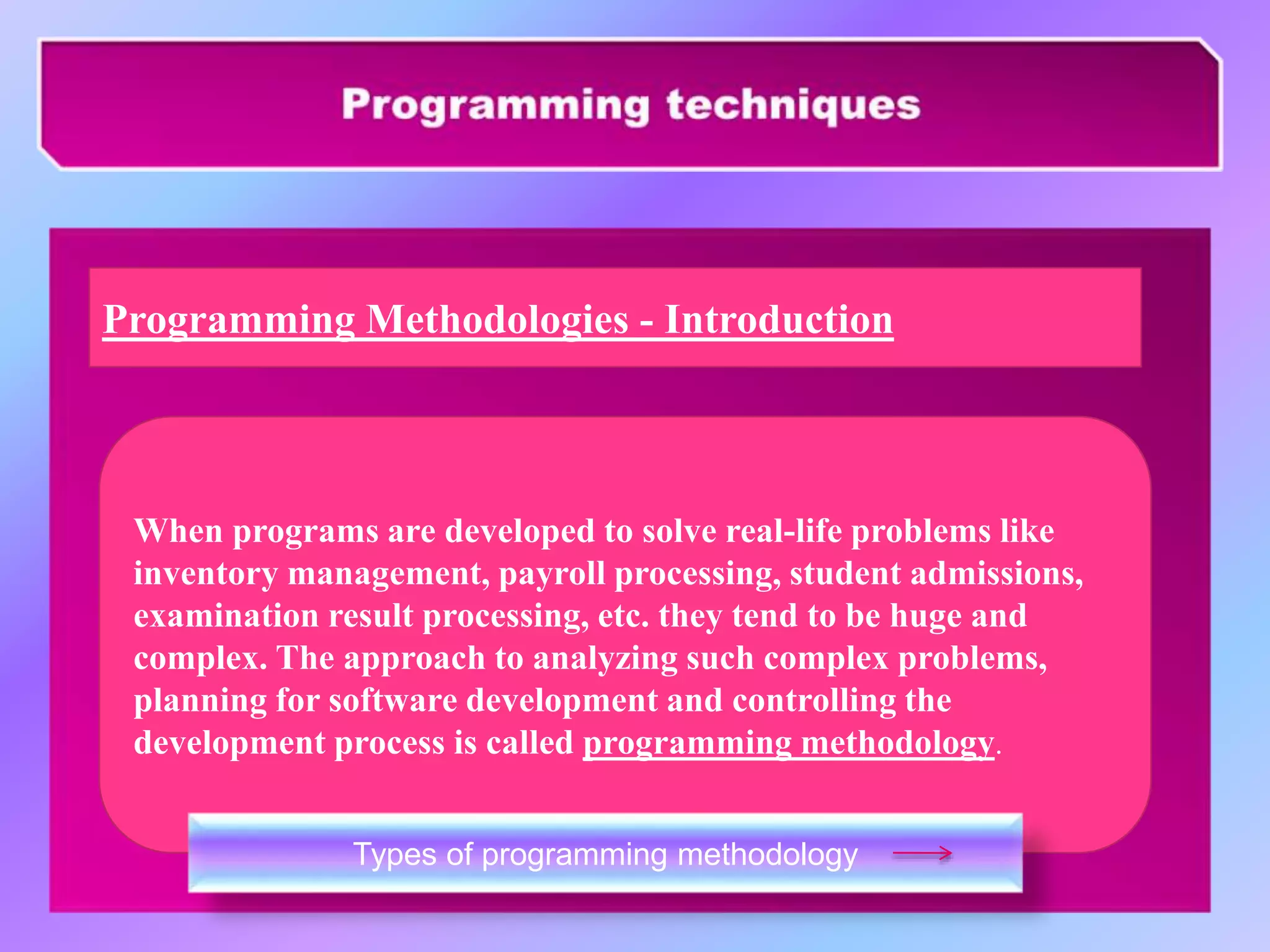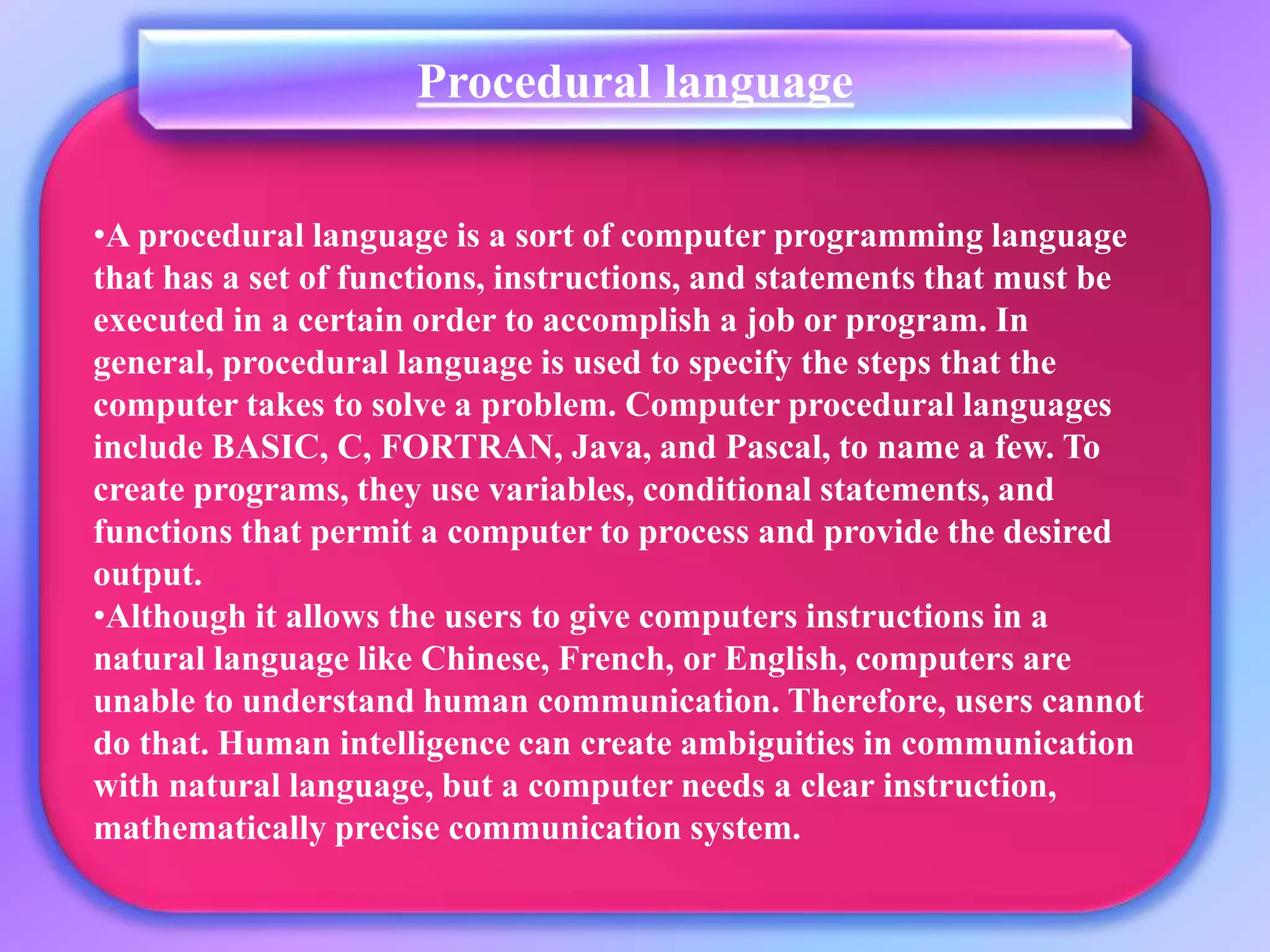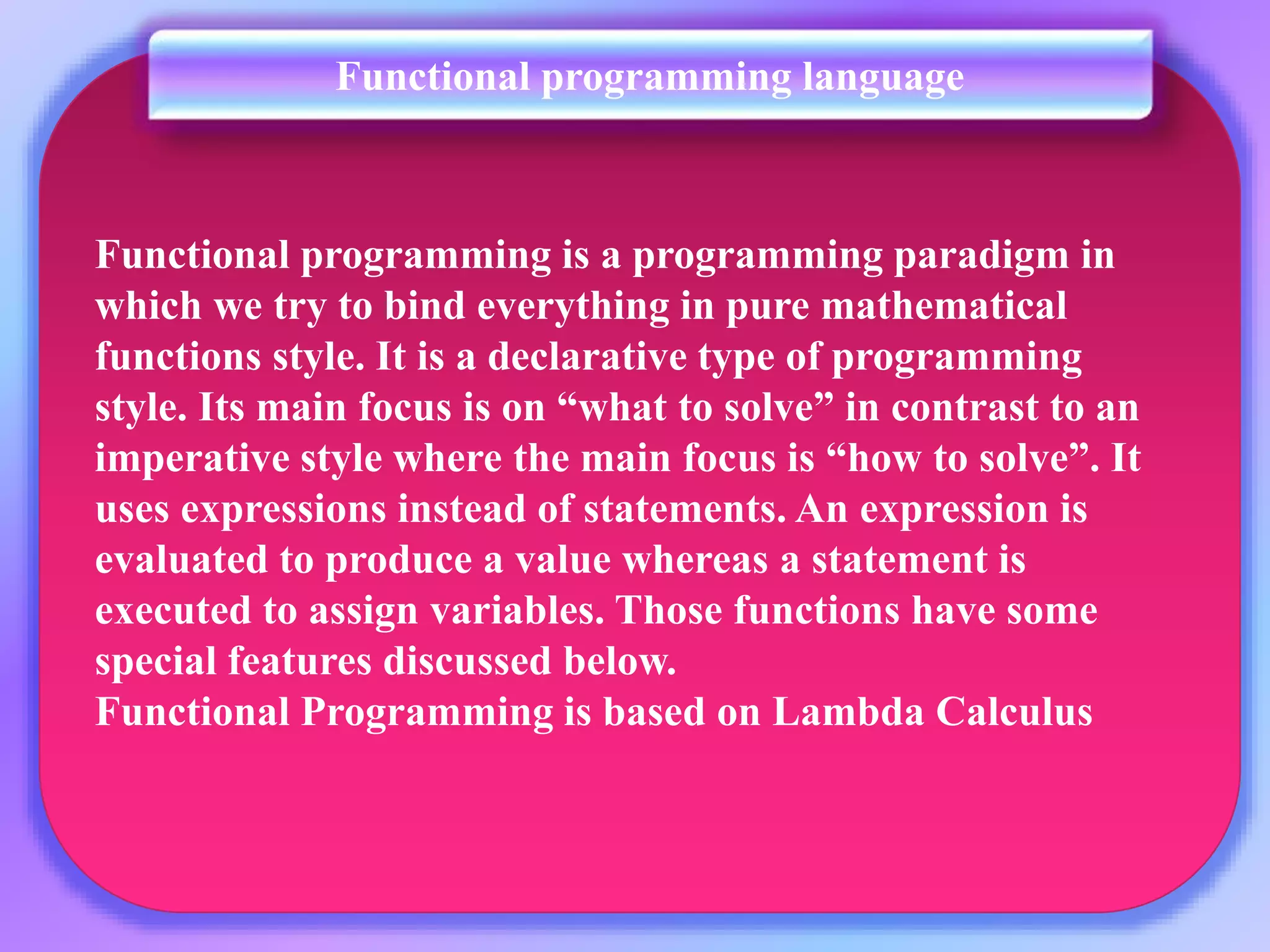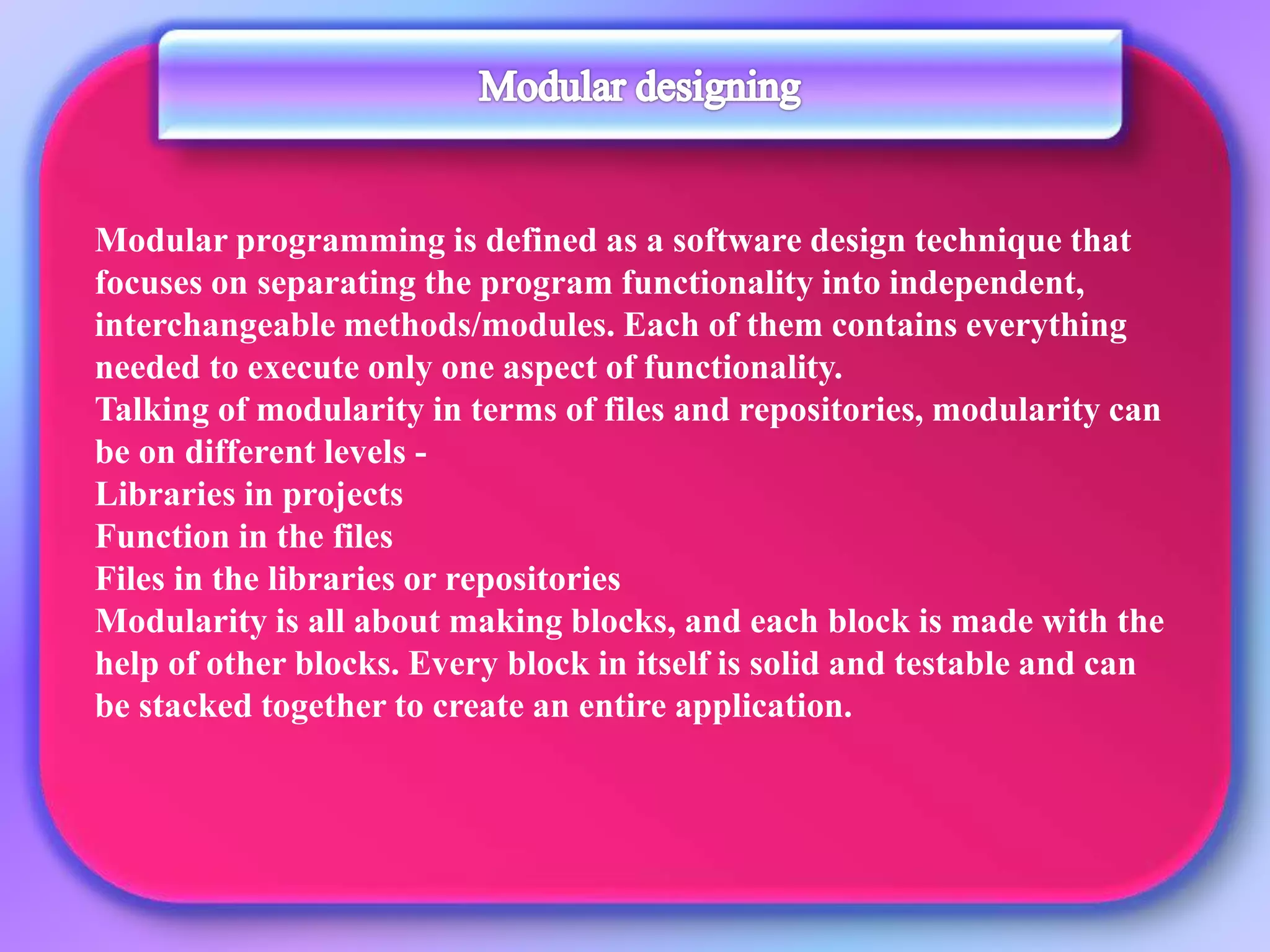Programming involves writing computer code to solve problems by implementing algorithms. A program is a set of instructions that a computer follows to perform a task. A programmer writes computer software and applications using specific programming languages. There are different programming methodologies and languages. Procedural languages specify the steps to solve a problem using variables, conditions, and functions. Functional programming uses pure mathematical functions and expressions instead of statements. Structured programming facilitates creating programs with readable code and reusable components. Modular programming separates program functionality into independent and interchangeable modules.

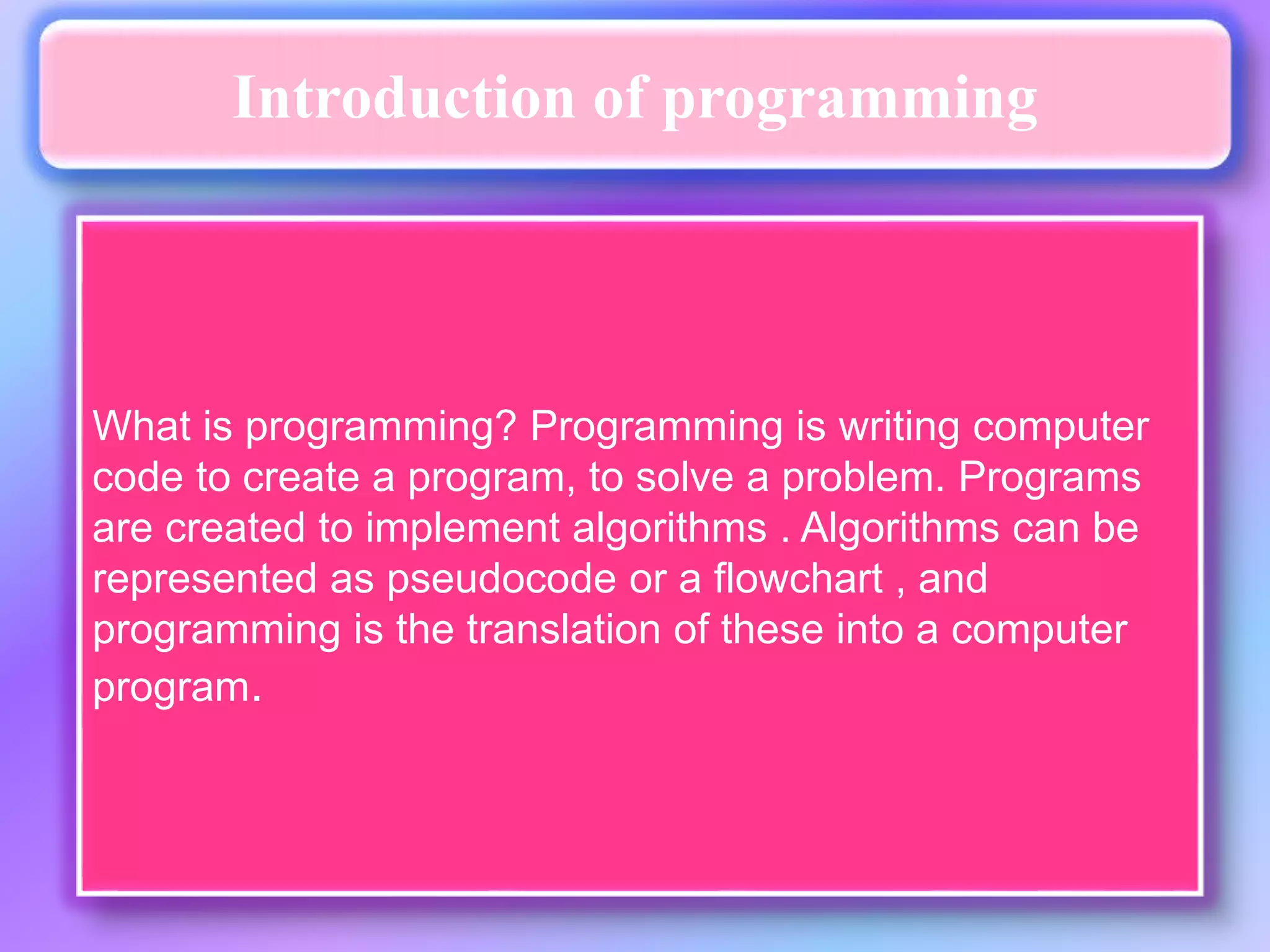
![What is program ? A program is a set of instructions that a computer follows in order to perform a particular task. [computing] The chances of an error occurring in a computer program increase with the size of the program](https://image.slidesharecdn.com/bjuercazsxo3ukiibpwu-changes-in-ppt-230913133155-b34a827a/75/Ppt-about-programming-in-methodology-3-2048.jpg)
